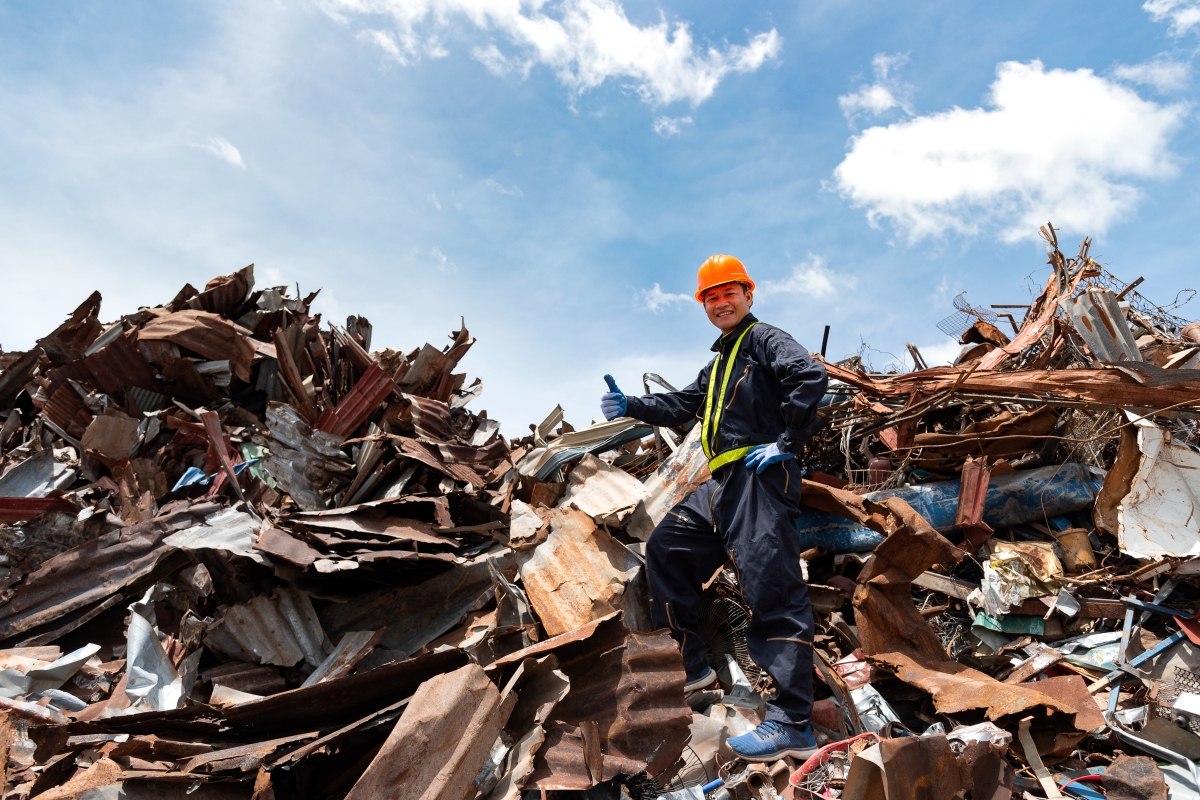Career Overview
Inspectors and testers in this group:
- Inspect, grade, sample or test raw materials and products from mineral ore and metal processing operations
- Work in mineral ore and metal processing plants such as copper, lead and zinc refineries
- Work in uranium processing plants, steel mills, aluminum plants, precious metal refineries, cement processing plants, clay, glass and stone processing plants and foundries
Job Titles
Duties
Inspectors and testers perform some or all of the following duties:
- Inspect mineral ore, metal, cement, glass, clay or concrete products at various stages of processing to make sure specifications are followed
- Grade and label raw materials or finished products according to size, thickness, composition or other classification standards
- Take samples of products during or after processing operation for routine analysis or for subsequent laboratory analysis
- Test product for strength, density, durability and conformity to specification
- Tell supervisor or process and machine operators about problems and product deficiencies
- Complete inspection and test reports
Earnings
Earnings is income that workers receive in exchange for their labour. Depending on the type of employment, earnings can be in the form of wages (hourly), salaries (fixed monthly or annual) or self-employed earnings.
Work Environment
# Workers Employed
110% Employed Full Time
68%Key aspects of the work in this occupation:
- Work takes place in a regular controlled indoor environment
- Work also takes place in an indoor environment, such as a furnace room where temperatures or humidity may vary considerably
- The workplace may contain flying or airborne particles from metal or minerals that may cause injury
- Workers may be exposed to fire, steam or hot surfaces that can be hazardous
- Noise in the workplace may cause distraction or hearing loss
Career Pathways
Career path information is currently not available.
Related Careers
Occupational Interests
It’s important to understand what kinds of occupations align with your interests.
For more about occupational interests visit Skills for the Future Workforce > Characteristics.
Here are the top occupational interest(s) for this career profile:
Education, Training and Skills
- Completion of secondary school is usually required
- Experience as a machine or process operator in mineral and metal processing is usually required
Education programs in B.C.

Skills
Every job calls for a certain set of skills. Knowing those skills is the first step in finding a good career fit.
Here, you will find the 10 most relevant workplace skills. Some are more important to achieving success in a certain career than others. These skills may come naturally to you or you may need to gain them through education, training and experience.
See the list of work-related skills below, ranked in order of importance for this career. Check out the list and see if this career matches your skills—take that first step!
Conducting tests and inspections of products, services or processes to evaluate quality or performance.
Using logic and reasoning to identify the strengths and weaknesses of alternative solutions, conclusions or approaches to problems.
Communicating effectively in writing as appropriate for the needs of the audience.
Giving full attention to what other people are saying, taking time to understand the points being made, asking questions as appropriate, and not interrupting at inappropriate times.
Understanding written sentences and paragraphs in work-related documents.
Talking to others to share information effectively.
Considering the relative costs and benefits of potential actions to choose the most appropriate one.
Keeping track of and assessing your performance, other individuals, or organizations to make improvements or take corrective action.
Watching gauges, dials or other indicators to make sure that a machine is working properly.
Managing one’s own time and the time of others.
Labour Market Statistics
Discover data, facts and information that have been gathered and analyzed. Learn about the characteristics of the economy and labour market in B.C.
Employment
Find out about employment types and trends by region and industry.
Employment
110Employment by Region







| Region | Employment | % Employment of this Occupation |
|---|---|---|
| Cariboo | 0 | 0.0% |
| Kootenay | 0 | 0.0% |
| Mainland/Southwest | 90 | 81.8% |
| North Coast and Nechako | 0 | 0.0% |
| Northeast | 0 | 0.0% |
| Thompson-Okanagan | 10 | 9.1% |
| Vancouver Island/Coast | 0 | 0.0% |
Labour Market Outlook
The B.C. Labour Market Outlook is a 10-year forecast of the expected supply and demand for labour in the province. It’s usually updated every year. The purpose is to provide British Columbians with the knowledge to make informed decisions on careers, skills training, education and hiring.
Forecasted Job Openings (2024-2034)
50Forecasted Job Openings
Forecasted Employment Growth Rate
Composition of Job Openings
Job Openings by Region (2024-2034)







| Region | Job Openings | Avg. Annual Employment Growth |
|---|---|---|
| Cariboo | Not available | Not available |
| Kootenay | Not available | Not available |
| Mainland/Southwest | 50 | 1.3% |
| North Coast and Nechako | Not available | Not available |
| Northeast | Not available | Not available |
| Thompson-Okanagan | Not available | Not available |
| Vancouver Island/Coast | Not available | Not available |
Industry Highlights
Learn about the opportunities in B.C.'s major industries, including employment trends, earning potential, locations of work and more.
Forecasted Job Openings by Industry
| Industry | Job Openings (2024-2034) |
|---|---|
| Manufacturing | 40 |
| Professional, Scientific and Technical Services | 10 |
| Construction | 10 |
Resources
Resource information is currently not available.







